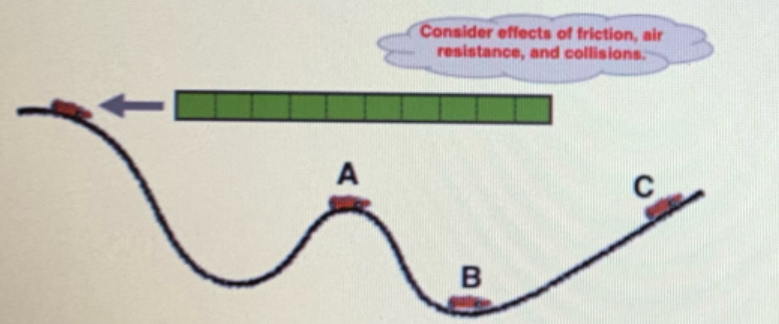Analyze the following situation. A student chooses the following energy bar charts to represent the energy for each location. However, one of the charts is incorrect. Which one is incorrect? Explain why it is incorrect and propose a better solution. A toy car rolls along a track and up a hill to its highest point (C). Use the given Energy Bar Chart to identify the appropriate Bar Charts for locations A, B, and C. KEY: A: B: C: Kinetic A Consider effects of friction, air resistance, and collisions B Tap to identify the appropriate Bar Charts for A, B and C Grav. Potential Dissipated с Elastic Potential (?) Option 3 of 6 Option 2 of 6 Option 5 of 6
Simple harmonic motion
Simple harmonic motion is a type of periodic motion in which an object undergoes oscillatory motion. The restoring force exerted by the object exhibiting SHM is proportional to the displacement from the equilibrium position. The force is directed towards the mean position. We see many examples of SHM around us, common ones are the motion of a pendulum, spring and vibration of strings in musical instruments, and so on.
Simple Pendulum
A simple pendulum comprises a heavy mass (called bob) attached to one end of the weightless and flexible string.
Oscillation
In Physics, oscillation means a repetitive motion that happens in a variation with respect to time. There is usually a central value, where the object would be at rest. Additionally, there are two or more positions between which the repetitive motion takes place. In mathematics, oscillations can also be described as vibrations. The most common examples of oscillation that is seen in daily lives include the alternating current (AC) or the motion of a moving pendulum.

Given:

We have to find which one of the charts given is wrong.
Step by step
Solved in 3 steps with 3 images









